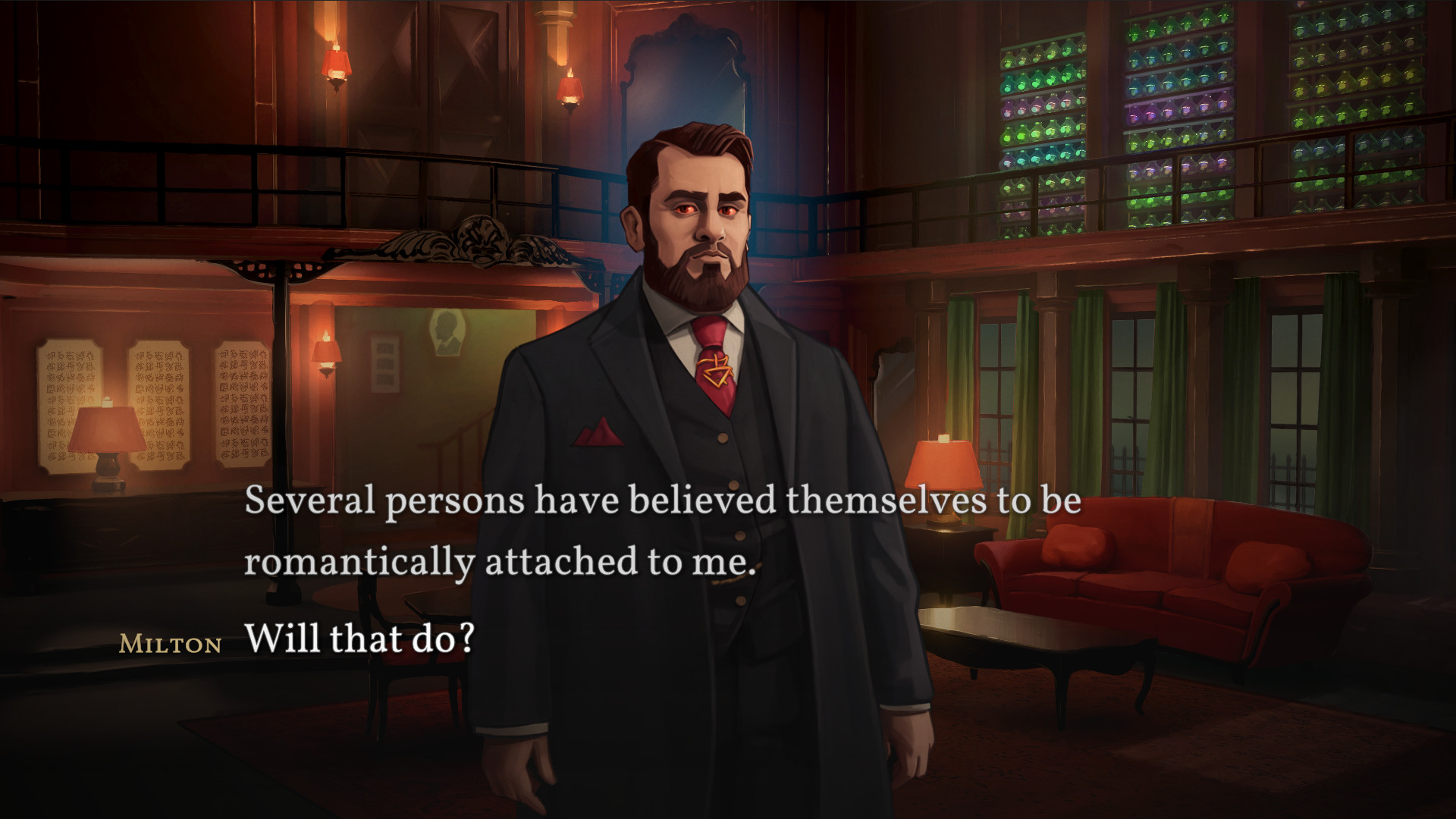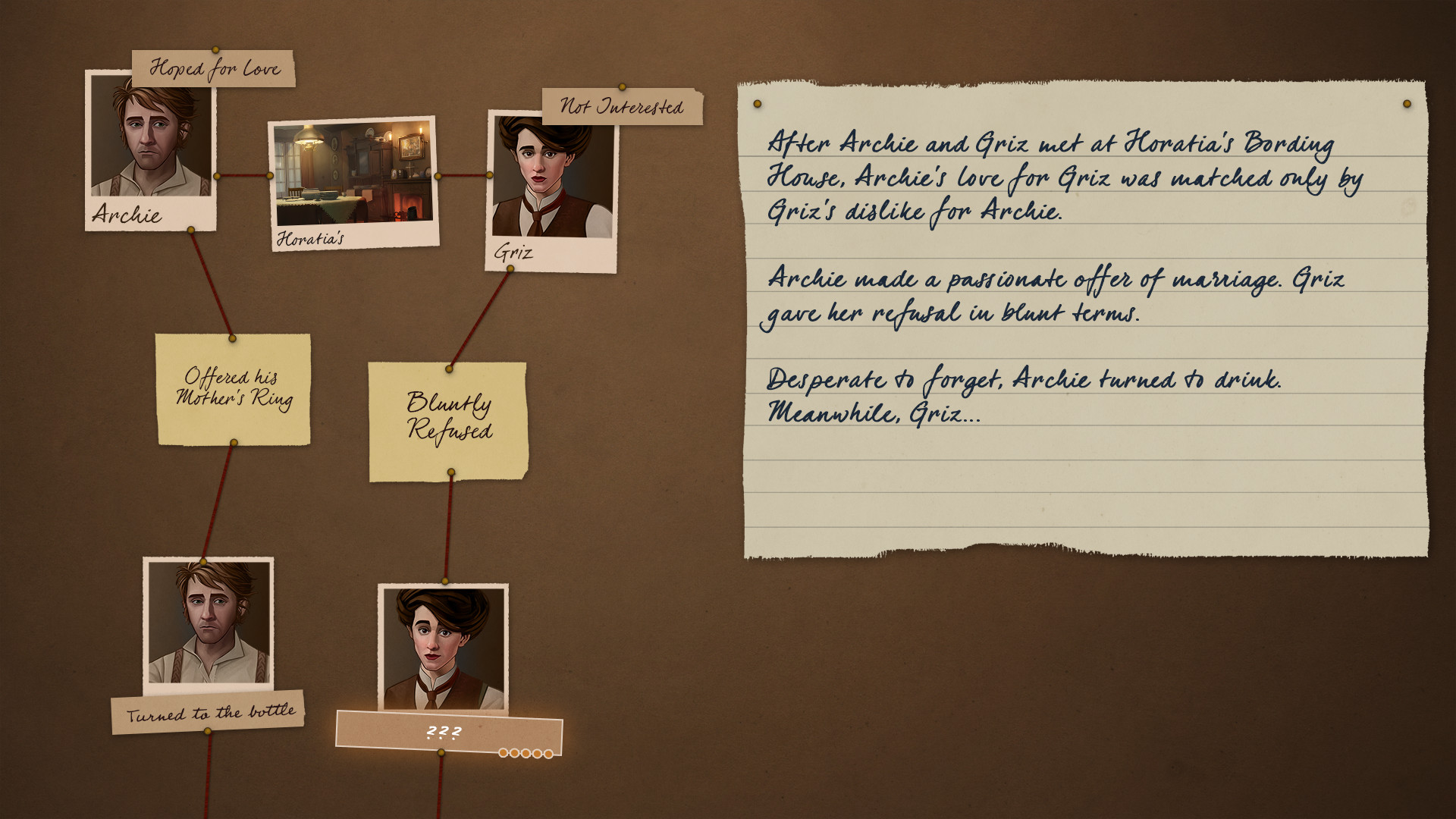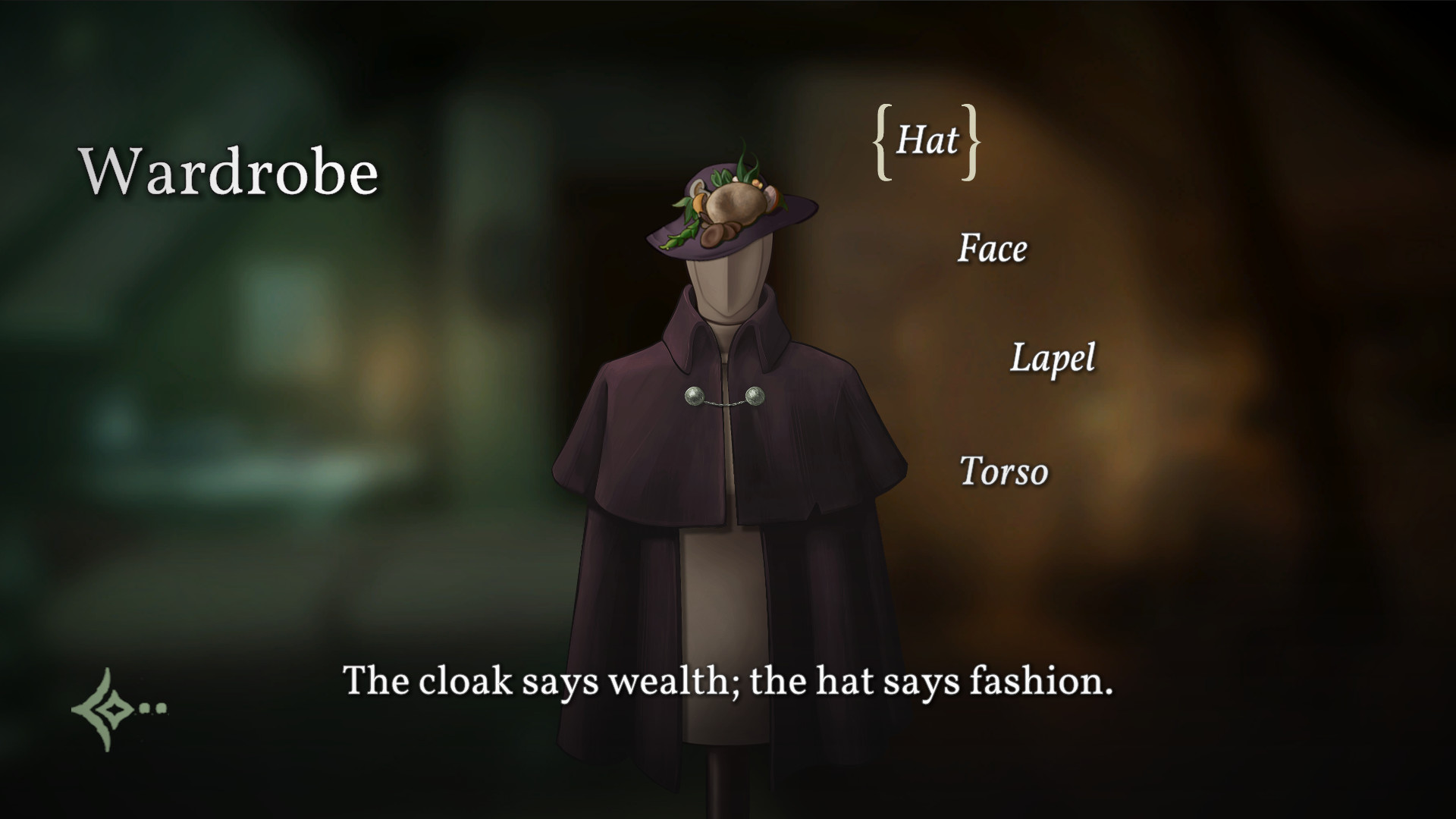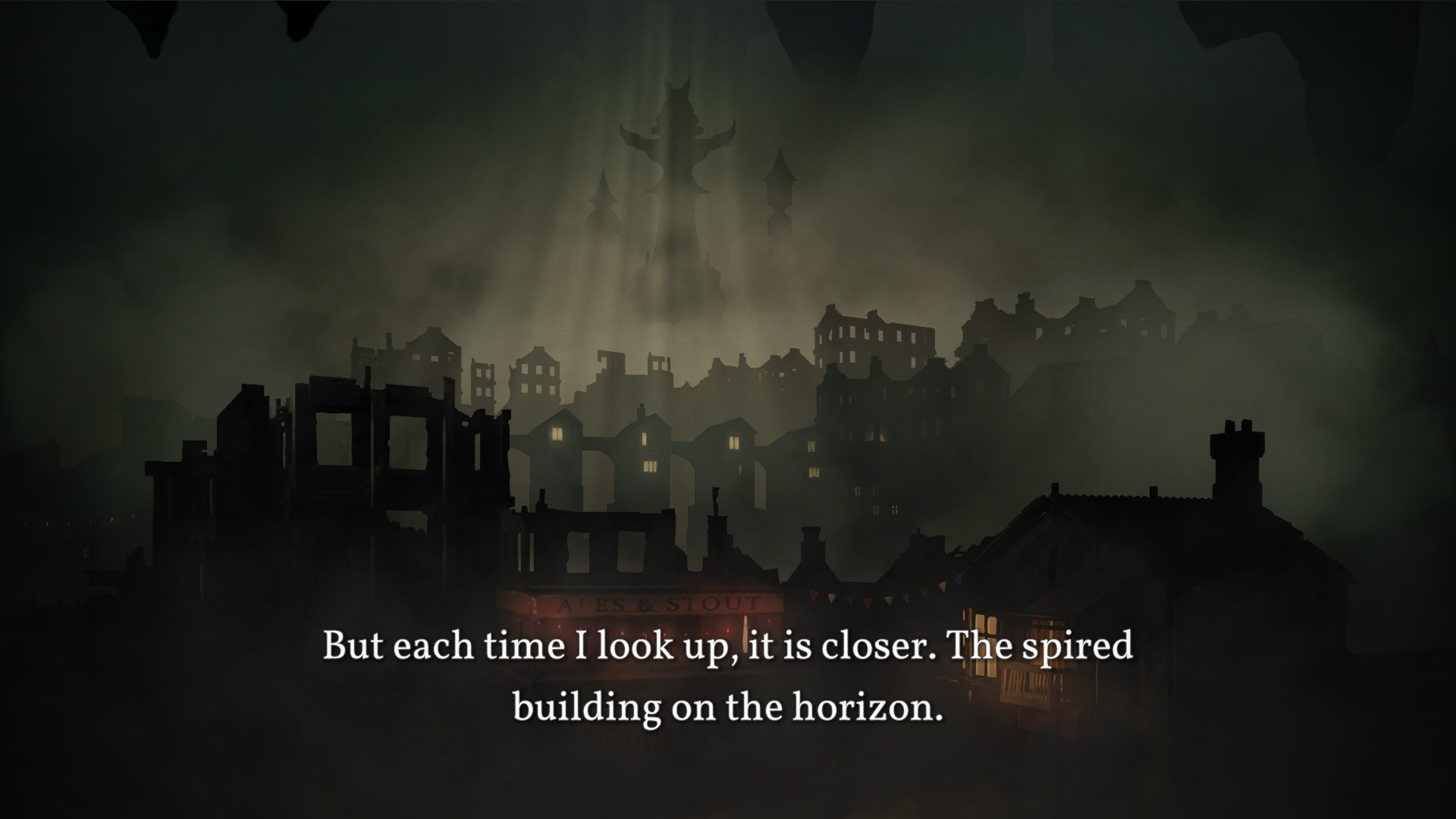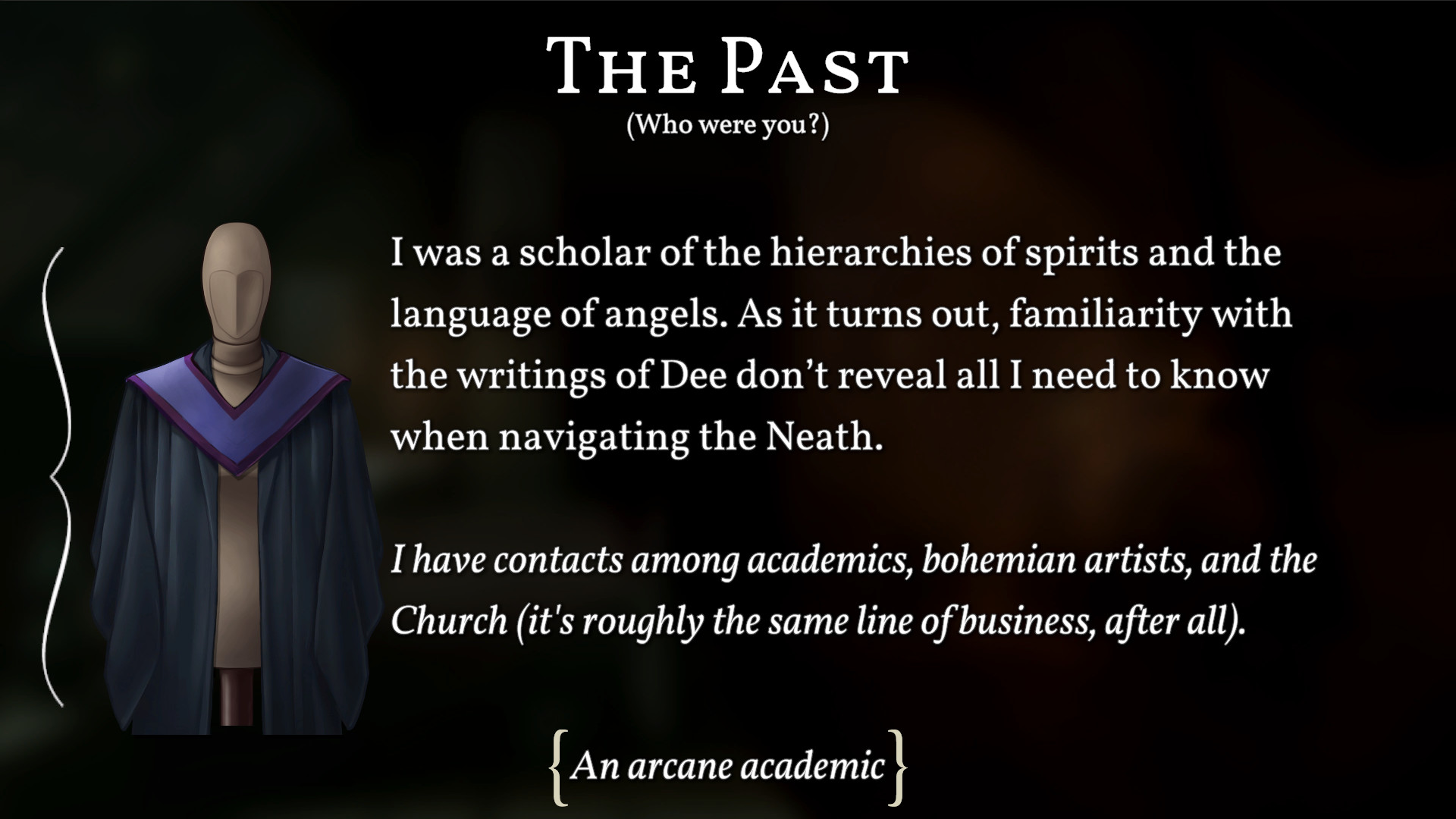
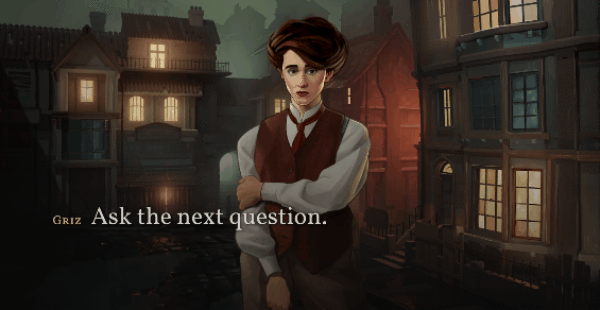
Welcome to Fallen London: a darkly hilarious gothic underworld where death is a temporary inconvenience, the rats talk, and Hell is only a stone's throw away.
Thanks to an unknown bargain, London now resides in a vast cavern under the earth. Down here, the sun doesn't shine, and Parliament has sunk into the Thames. Queen Victoria never emerges from her palace. Cats spy on their owners and whisper their secrets abroad. The fabric of strait-laced Victorian society has begun to fray.
New Masters are in charge. Why are they so… tall? And always cloaked? And why are they so interested in love stories?
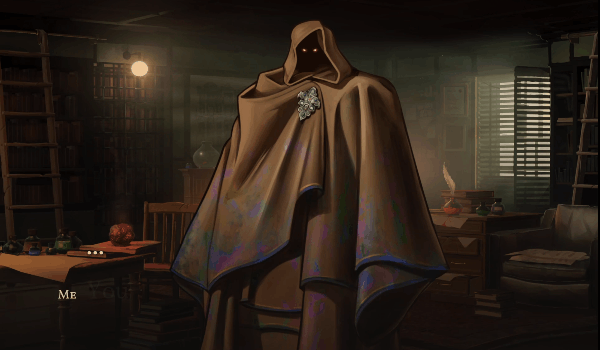
The possibilities for personal connection in London are different now. Thrown together in crisis, you might befriend or romance many of the characters you meet, from Griz, your assertive housemate for whom the Fall was a chance to break free of Victorian societal norms, to the infernally well-dressed gentleman at the Brass Consulate with the amber eyes.
Even death itself has a twist here: the first murder victim since the Fall is feeling much better, and keen to see justice done. Unfortunately, as the doctor who treated him immediately before he expired, your housemate Archie is the prime suspect...

- (Re)invent yourself: who were you before the Fall? Who will you be now?
- Create outfits from a selection of clothing and unusual accessories to unlock different story options
- Fall in love with a cast of diverse Londoners, each with their own secrets
- Matchmake among your friends, or seek love for yourself (by any definition you like)
- Write love stories in a delightful minigame, and use them to impress the new Masters
- Pick up odd jobs to earn money and gather resources. How are you at rat catching?
- Solve the first murder since the Fall, with the assistance of the victim
- Discover cosy, mysterious and magnificent locations in a dark and delicious version of Victorian London
- Seek deeper and deeper secrets over multiple playthroughs

Will you be a brilliant matchmaker, connecting friends and rivals while remaining unattached? Or are you looking for lasting love? Perhaps you're open to whatever comes your way? Every major storyline is accessible regardless of whether your approach to love is romantic or platonic.
Use an elaborate, dynamic story-crafting system to create love stories – and murder theories. Are the twists in the tale not to your taste? Then change the motive, the location, even the victim, and see how the stories adapt!
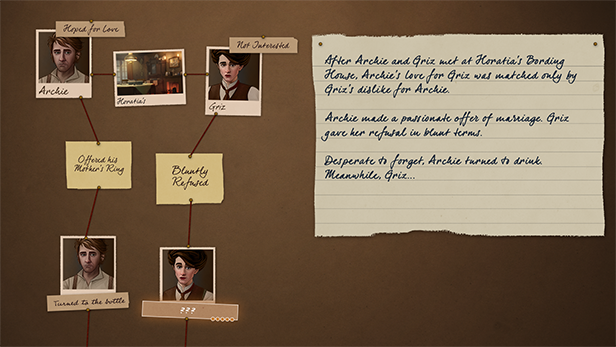

Your past will open different doors for you in London. What was your life on the Surface like? Were your family landed gentry? Or did they own a tailor’s shop, or dabble in the occult?
Your clothing will also make people think differently of you. Your outfits open new possibilities in conversation: be bolder, more commanding, more flirtatious. Ingratiate yourself with London's inhabitants by changing your style of dress – they won't be able to resist you in that hat!
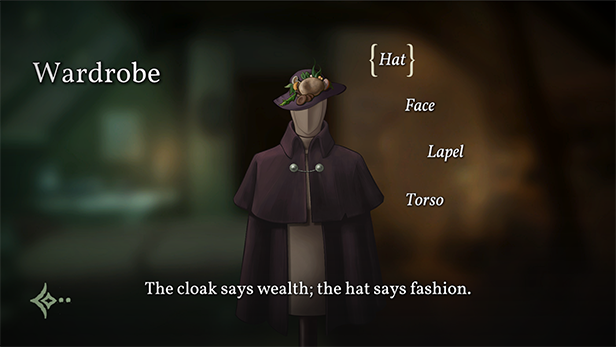
You'll also work odd jobs and collect resources which will open new avenues in social situations. Your housemate Griz has found you work as census-taker for those curious new Masters. Fill your census-taker's notebook with intimate details about your fellow citizens and you'll find you can pursue deeper relationships with them, romantic or otherwise.



Griz
For your fellow lodger Griz, the Fall of London has been a liberation – the chance to throw off her corsets, dump the dresses and be taken seriously in a position that would have been forbidden to her when she was 'Miss Griselda'.
Archie
For your other housemate Archie, the change is terrifying. What is a medical student supposed to believe in when even the laws of death no longer apply?
Harjit
When the Fall struck, Harjit stepped up to help anyone who needed it. Now he’s settling into his role as a man in uniform, but the territory is unfamiliar – and, secretly, he has a missing person of his own to find.
Milton
Milton is the amber-eyed host of a literary parlour with a scalding handshake and a prior address in Hell. He’s an excellent listener, but does he only want you for your soul?
Rachel
Rachel was halfway through her serialised novel when London fell and everything she was writing about was turned upside-down. Her publisher grows impatient. Fortunately (?) meeting Milton has rekindled her passion – for more than just writing.
David
Rachel’s brother, and no fan of Milton, David is also destined to be Fallen London’s first murder victim. When he returns from the dead, you can ask him all about it.
Horatia
For a decade, Horatia has taken in lodgers and turned them into family. Since London fell, people need the security she offers more than ever. So when a man made entirely of clay knocks at the door, offering to pay handsomely for lodgings, she can hardly refuse.
Mr Pages
One of London's new, mysterious “Masters”, Mr Pages has embarked on the titanic endeavour of conducting London’s first post-Fall census! But why are its questions so concerned with the love-lives of London’s citizens? How do people declare their affection, in this fair city? How lasting are their attachments? Might a Londoner take an interest in a very tall, broad-shouldered, cloaked personage that leans towards the chiropterous, hypothetically speaking?
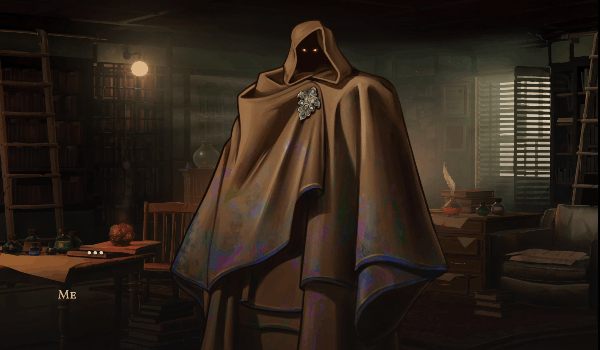

Explore this unique city in glorious, richly rendered 2D. Experience London through three seasons: the season of Confessions, the season of Yule, and the season of Love. Help establish the first Feast of the Rose, a festival of romance that will be celebrated in London for decades to come!
For players of Sunless Sea and Sunless Skies, Mask of the Rose offers a chance to immerse yourselves in the city that founded this deep, dark, and marvellous universe. And for veteran players of the Fallen London browser game, it marks your first opportunity to visit the city just after it fell. But fear not: Mask of the Rose is an excellent introduction to the universe we’ve been building for more than a decade, and you don’t need to have played our other games first. Come on in. Most things won’t bite, unless you want them to.
Explore the locales, lives, and loves of an impossible city. Exchange bon-mots with devils. Investigate the first murder where the victim can testify at the murderer’s trial. Dive into the sunken ruins of poor drowned Parliament. And if you’re truly reckless, fall in love.
The last Mask of the Rose devlog of the year comes from our creative director, Emily Short.
Mask of the Rose doesnt try to be true to the realities of Victorian London, and thats not just because of the supernatural elements in the mix. The characters dont speak in true Victorian diction: instead, they use language that sometimes suggests their setting, but is hopefully still familiar enough to players to feel comfortable. We didnt want accuracy to come between players and a sense of connection.
And there are lots of things we left out of our world because they werent what the story is about. What happens if you move a city already suffering from severe sewage management issues into a dank, enclosed space? We probably dont want to know.
How much food would you have to warehouse in order to feed this many people? We could come closer to answering that one, thanks to the monumental (and monumentally titled) contemporary volume The Food of London: A Sketch of the Chief Varieties, Sources of Supply, Probable Quantities, Modes of Arrival, Processes of Manufacture, Suspected Adulteration, and Machinery of Distribution, of the Food for a Community of Two Millions and a Half . Despite its helpful hint that London ate 80,000 tons of cabbage a year, we didnt draw so much from the numbers in The Food of London, and took more of an interest in the suspected adulteration passages which give fascinating anecdotal snippets about historical methods of culinary fraud.
Very often, what we were looking for was not rigorous accuracy or even plausibility. (This is a world full of Rubbery Men and talking crows. Plausibility departed long ago.)
Instead, we were looking for fitness and specificity. All these research materials, we used the way John McPhee is said to have used a Websters 1913 dictionary : as a treasury of images, incidents, and character observations more perfectly suited to the story we were telling than any we could think of on our own.
Here are a few of the more entertaining or surprising resources we found along the way.
Neathy Animals
We knew that bats of several kinds were going to have a starring presence in Mask of the Rose. After all, they did steal London. It was fascinating to learn more about how bats smell ; how they hunt; what they eat; and how they mate (often upside down). The Secret Lives of Bats, by Merlin Tuttle is loaded with stories, images, and pro-bat advocacy.

Meanwhile, when we wanted to know how a rat population might react to a sudden change in the circumstances of the city, we listened to this podcast on Urban Rodentology with Allie Ward and Bobby Corrigan . The discussion that covers how rats in New York City reacted to Covid lockdown fed straight into Ferrets dialogue. Or, from the same podcast, we also recommend this piece on Corvid Thanatology , which is to say, crow funerals.
London Subcultures and Daily Life
There are reference materials weve used to establish Fallen London for many years: Henry Mayhews London Labour and the London Poor is a classic. For Mask, we wanted some fresh inspiration and, especially, to look for cues that would set London of the 1860s apart from London of 1890-1900. London and Londoners in the 1850s and 1860s is a memoir by Alfred Rosling Bennett, made up of scattered memories from his childhood. It is full of details from exactly the era we want, and often evocative in a way that other histories might not be:
The coffins were covered with black cloth a very familiar street sound in those days was the tack tack tack of the undertakers hammer as he nailed on the cloth in his shop. He did it with a kind of rhythm that rendered the process unmistakable.
Novels have been an important source as well. One of our favourites was Amy Levys Reuben Sachs , a beautifully observed story of life in a reasonably well-off Jewish family. Its the sort of book thats well worth reading whether or not youre writing a game on related subjects.
Murder and Criminal Justice
Facts, Failures and Frauds: Revelations, Financial, Mercantile, Criminal, by David Morier Evans , offers some contemporary descriptions of inquests and investigations.We also spent quite a bit of time with the records of criminal trials at the Old Bailey . This was often a depressing read: stories about real people committing murder are rarely as fun as a fictional mystery, and they often exposed poverty and desperation more than anything else.
But there are other surprises to be found in the recorded case testimony. One constable discovered a death in his neighbourhood because he habitually provided wake-up calls, knocking on the door at a time requested by the inhabitant and he noticed when the person who lived in a house stopped putting a mark on his door indicating when he wanted to be woken. This sort of detail about how early constables interacted with the neighbourhood helped shape our concept of Harjit.
Of course, one cant write a poisoning murder without some information on the relevant substances. There were a number of books that came in handy here, but especially The Arsenic Century: How Victorian Britain Was Poisoned At Home, Work, and Play . Read this, and youll wonder how any Londoners survived to become Edwardian.

Immigrants in London
Lady Logins memoirs describe multiple places and situations with a bearing on Mask, from the voyage to India to details of childhood in early 19th century Scotland. Theyre very much a product of their time, and the attitudes of their author come through in ways that dont always flatter her but the acute and specific observations were useful.For Phoebe, the Irish housemaid, we drew quite a bit from Fin Dwyers Irish history podcast , which covers the great famine, the surrounding politics and culture, and the aftermath in detail.
This one isnt a book or even a podcast, but Equiano Centers map of Black Londoners shows the variety of Black stories in 19th century London. Horatia draws strands from several different historical figures, without being an exact match to any of them.
And though it isnt a primary source or a piece of serious historical writing, Amitav Ghoshs extensively-researched Sea of Poppies gave us a better sense of how the lascars of Londons docklands might act and speak.
How Characters Might Interpret the Neath

Liliths Cave: Jewish Tales of the Supernatural, by Howard Schwartz . We came to this book through the question how would people steeped in Jewish traditions interpret the strange things they find in the Neath? Fallen London for the most part labels things in the Neath based on a Christian cultural context. But would people with a different background see devils the same way? Understand death or ghosts in the same terms? Liliths Cave is a great book for dipping into, with stories that run just a few pages.
Meanwhile, our consultancy on Jewish Londoners suggested that we might want to learn more about Jewish messianic movements in order to understand how his contemporaries might have read Davids death and return. That led us to the Sabbatai Zevi series on the Seforimchatter podcast. Seforimchatter hosts long, academic discussions of books on Jewish thought and history, designed for a Jewish audience. There was far more here than we needed to know for Mask, but the conversations were so interesting that we found ourselves listening to further episodes in our spare time.
Models for Spoken Language
Not all research is setting research. When writing dialogue for a lot of characters, it can be helpful to look for speech models, just as an artist might use models and anatomical references even to draw an imaginary character.
For the different cadences of different speakers in Mask, we listened to samples from the BBC Voices project , a large collection of spoken dialects from around the British isles. And episodes of Rumpole of the Bailey helped us flesh out how characters would speak in a courtroom.
Writing Romance and Sex in Games
Writing for Mask also meant we needed to write a number of romantic and sexy scenes with our characters. This wasnt new territory, but insight from other developers remains very useful.
Michelle Cloughs Passion and Play suggests a number of handy comparisons and examples from other games, and lays out a triad of approaches sacred, mundane, profane to describing physical intimacy as part of a relationship and character arc.
And quite a bit else.
Writing the characters and situations of Mask of the Rose took us through topics as varied as symptoms of agoraphobia; Anglican evensong liturgy, with particular attention to the assigned readings for early October of 1862; Sikh teachings on gender and sexuality; Parliamentary record-keeping; real-life personal accounts from people who had had family and loved ones go missing; Victorian Valentines ; Georgian-era abolitionist movements; the identity and location of the oldest tree in London
Minimum Setup
- OS: Ubuntu 20.04+. ArchLinux
- Processor: Intel Pentium 2GHZ or AMD equivalentMemory: 4 GB RAM
- Memory: 4 GB RAM
- Graphics: OpenGL 3.2+. Vulkan capable
- Storage: <8 GB available space
[ 6445 ]
[ 2788 ]
[ 6065 ]

